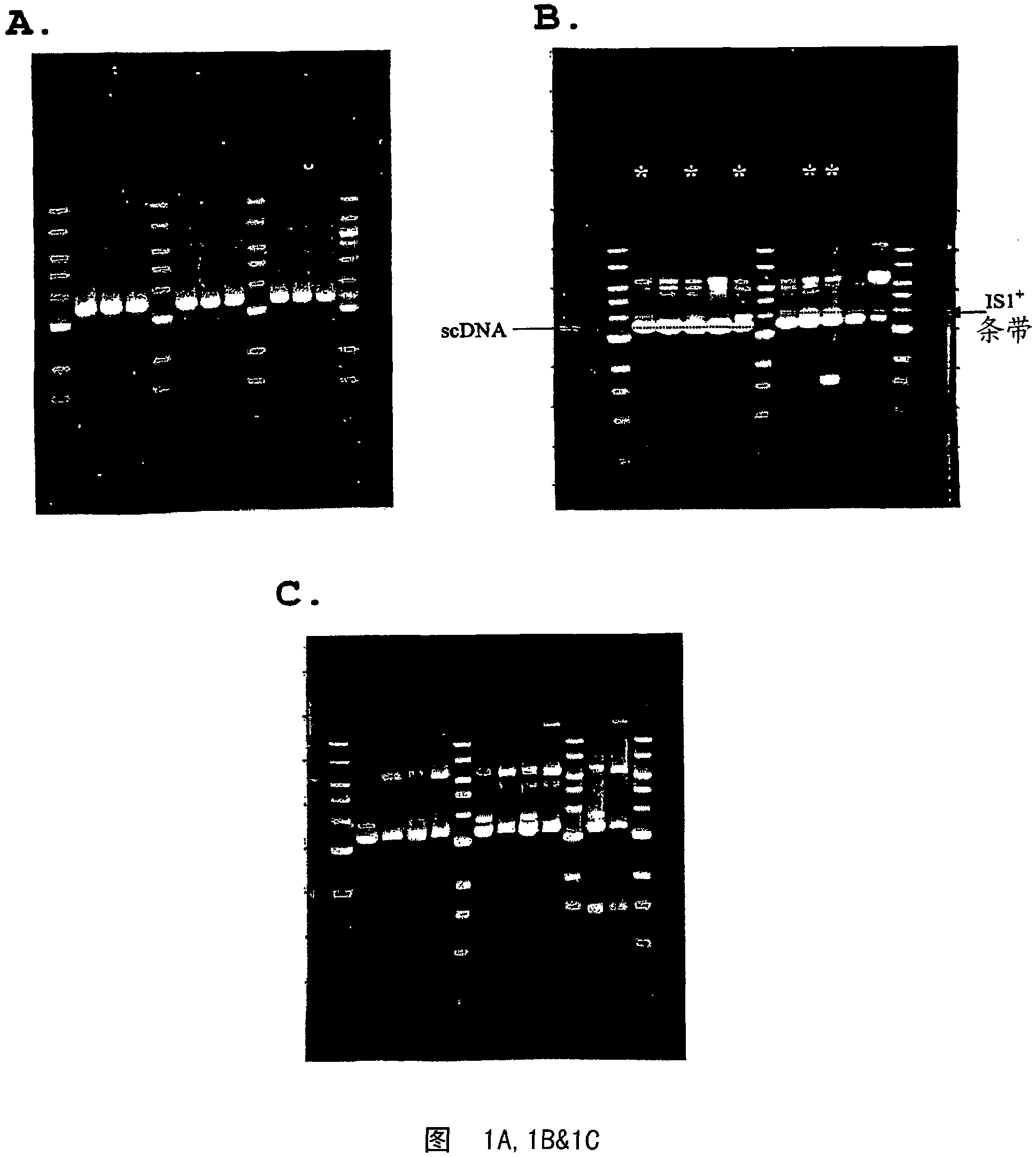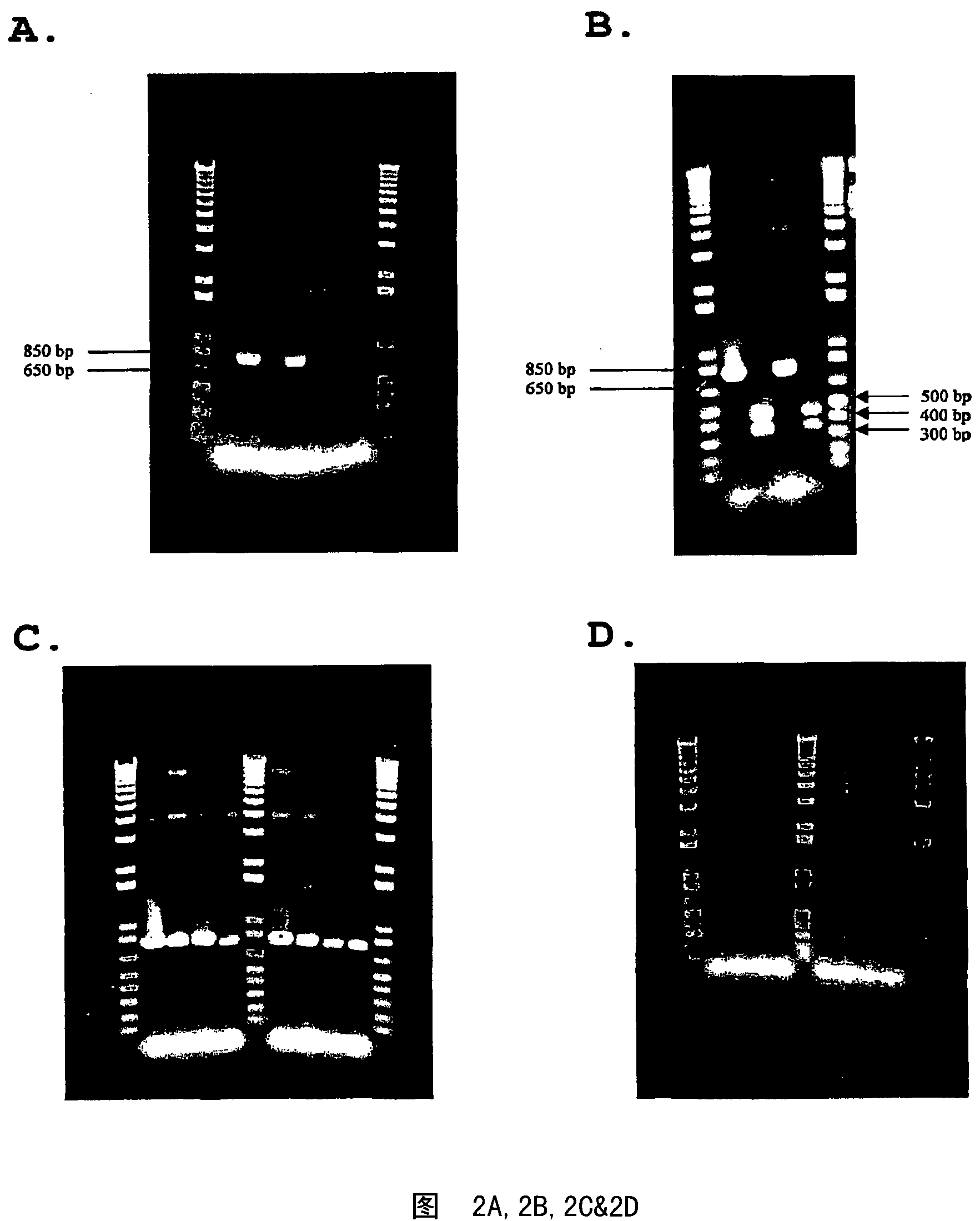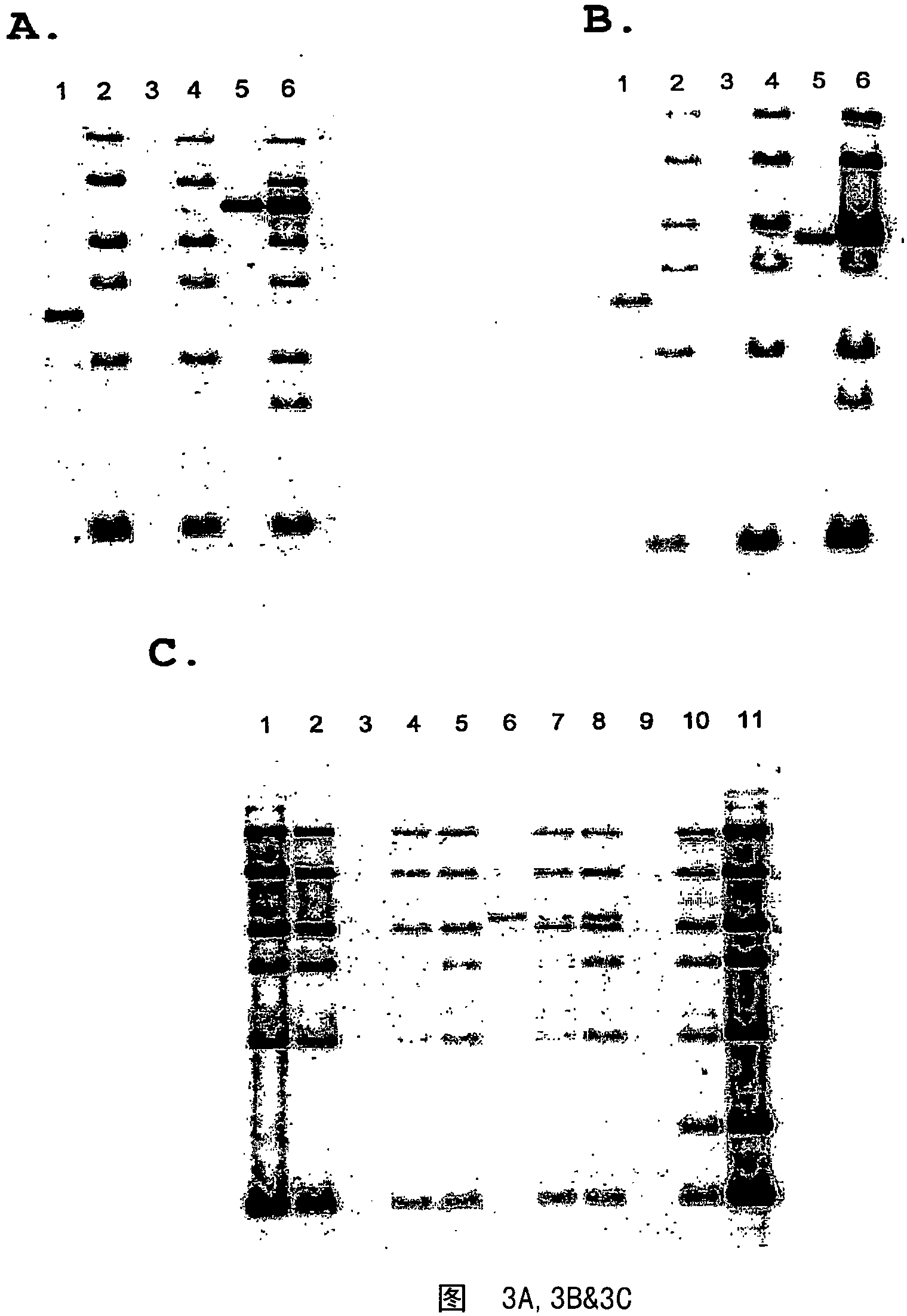Method for genetic selection of high-plasmid producing e. coli clones
A plasmid, high-yield technology, applied in biochemical equipment and methods, microbial assay/inspection, introduction of foreign genetic material using vectors, etc., can solve problems such as time-consuming and laborious
- Summary
- Abstract
- Description
- Claims
- Application Information
AI Technical Summary
Problems solved by technology
Method used
Image
Examples
Embodiment 1
[0083] Identification of IS1 Transposon in DNA Vaccine Plasmids
[0084] Strains, DNA vaccine plasmids and growth media - the host strain for all DNA vaccine constructs was E. coli DH5[F - deoR recA1 endA1 hsdR17(r k - , m k + )supE44λ - thi-1gyrA96 relA1]. This strain was originally purchased from Invitrogen (Carlsbad, CA; formerly GibcoBRL), adapted in synthetic medium DME-P5, and became electrocompetent for subsequent transformation. E.coli DH5α[F - φ80lacZ Δ M15 Δ(lacZYA-argF)U169 deoR recA1 endA1hsdR17(r k - , m k + ) gal - phoA supE44λ - thi-1 gyrA96 relA1] were purchased from Invitrogen (Carlsbad, CA) as electrocompetent cells. The construction of the HIV DNA vaccine plasmid V1Jns-nef is described in detail in International PCT Application No. PCT / US00 / 34162, filed December 15, 2000 (published June 21, 2001 as International Publication No. WO 01 / 43693). Briefly, the DNA vaccine plasmid consists of a pUC19-derived bacterial origin of replication and a neomy...
Embodiment 2
[0091] Comparison of IS1 content in high and low producer genomes using restriction fragment length polymorphism (RFLP) analysis
[0092]Strains, DNA vaccine plasmids and growth media - see, Example 1, supra. Alternatively, non-adapted, non-transformed cells were purchased from Invitrogen and maintained in LB medium. The construction of the HIV DNA vaccine plasmid V1Jns-tpa-nef (5540bp) is described in detail in International PCT Application No. PCT / US00 / 34162 (above). The construction of HIV DNA vaccine plasmid V1Jns-tpa-pol (7516bp) is described in detail in International PCT Application No. PCT / US00 / 34724 filed on December 21, 2000 (published as International Publication No. WO01 / 45748 on June 28, 2001 public). The construction of HIV DNA vaccine plasmid V1Jns-tpa-gag (6375bp) is described in detail in International PCT Application No. PCT / US98 / 02293 filed on February 3, 1998 (published as International Publication No. WO 98 / 34640 public).
[0093] Shake Flask Cultivat...
Embodiment 3
[0101] IS1 transposon integration site in the V1Jns plasmid
[0102] Materials and Methods - Plasmid DNA from V1Jns-nef clone NLB-5 propagated in DME-P5 medium was obtained as described in Example 1 . A total of sixteen oligonucleotide primers complementary to the intact, insert-free plasmid were designed to anneal in ~700 bp increments in the forward (8) and reverse (8) directions. The second set of primers is specific for the forward and reverse ends of the IS1 insert. A series of 32 PCR reactions were performed consisting of (i) one of 16 V1Jns-nef-specific primers and one of 2 IS1-specific primers, (ii) cloning of NLB-5 plasmid DNA as template, (iii) and HotStarTaq PCR Master Mix reagents (Qiagen). PCR reactions were performed using standard protocols. Each sample was analyzed on a 0.7% agarose gel to identify amplified fragments. The presence of amplified fragments is a preliminary indication of a vector-IS1 junction, but the possibility of false initiation events (fa...
PUM
 Login to View More
Login to View More Abstract
Description
Claims
Application Information
 Login to View More
Login to View More - R&D
- Intellectual Property
- Life Sciences
- Materials
- Tech Scout
- Unparalleled Data Quality
- Higher Quality Content
- 60% Fewer Hallucinations
Browse by: Latest US Patents, China's latest patents, Technical Efficacy Thesaurus, Application Domain, Technology Topic, Popular Technical Reports.
© 2025 PatSnap. All rights reserved.Legal|Privacy policy|Modern Slavery Act Transparency Statement|Sitemap|About US| Contact US: help@patsnap.com



